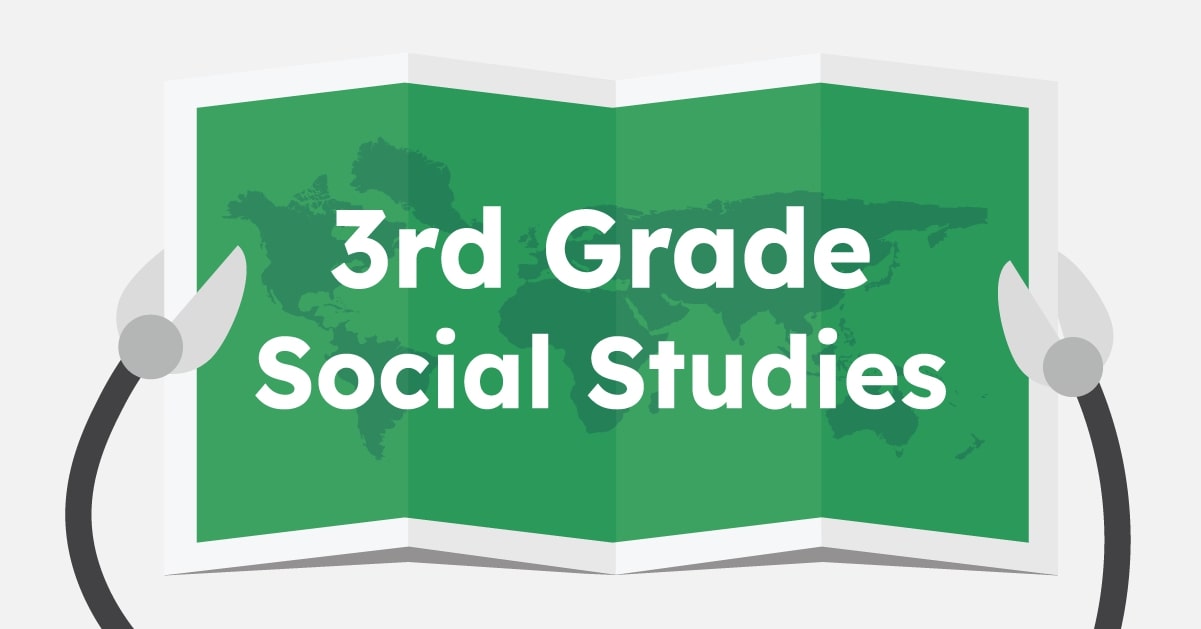3rd Grade Social Studies Curriculum
Social studies in third grade is a big year! At this stage, students are introduced to social studies concepts that help them understand how people live, work, and interact across different times and places. They learn about communities, rules and responsibilities, basic economics, geography, and how to think like a historian. The goal of third grade social studies is to encourage curiosity, critical thinking, and a deeper understanding of the world around them.
Miacademy emphasizes real-world understanding with interviews from diverse perspectives, examples from everyday life, and interactive activities that reinforce important ideas. Our curriculum also includes review games, quizzes, and writing prompts to support comprehension and retention. By blending storytelling, hands-on practice, and cross-topic connections, we help third graders see how social studies relates to their own lives, building a strong foundation for future learning.
Sample Lesson
You can find more social studies lessons for third grade on YouTube at The Miacademy Learning Channel!
Is my student ready for 3rd grade social studies topics?
Before beginning our third grade social studies curriculum, we suggest students complete our second grade social studies course, Beginning Social Studies 2, or an equivalent course.
Your child may be ready for third grade social studies topics if they can:
- Read and understand short nonfiction texts about people, places, or events.
- Remember key facts and connect them to bigger ideas.
- Understand the difference between past, present, and future.
- Follow simple maps and identify major locations like the U.S. or continents.
- Show curiosity about how communities work or how people lived in the past.
- Ask questions like “Why did that happen?” or “How do people make rules?”
- Express opinions about fairness, rules, or responsibilities.
- Participate in discussions by listening to others and adding their own ideas.
- Talk about basic community roles like mayor, teacher, or police officer.
- Demonstrate interest in different cultures, holidays, and traditions.
- Recognize U.S. symbols like the flag or know the names of key historical figures.
Third Grade Social Studies Worksheets – PDF Download
Each video lesson has an accompanying PDF with fun social studies activities to extend learning beyond the screen with a hands-on approach!
Click here to download a free sample PDF of our third grade social studies worksheets:
What are the 3rd grade social studies standards?
Third grade social studies introduces key ideas that help students understand the world around them. Through the study of culture, civics, economics, geography, and history, students begin to explore how communities work, how people live in different places, and how the past connects to the present. These standards create a strong foundation for thinking about people, places, and events from many different points of view.
Some common third grade social studies topics are:
- Continents, oceans, and basic world geography
- Maps, globes, and cardinal directions
- U.S. regions and major landforms
- Community roles and responsibilities
- Branches and levels of government
- U.S. symbols, holidays, and national documents
- Early American history and colonization
- Contributions of Native American cultures
- Important historical figures and events
- Needs vs. wants and basic economic concepts
- Goods, services, and how people earn and spend money
- Cultural traditions and celebrations around the world
Standards can vary by state, so be sure to check what’s required where you live.
Scope and Sequence
Exploring Social Studies
In third grade social studies, students will join Taylor and Jenna in the Learning Lounge to explore five important parts of social studies: culture, civics, economics, geography, and history.
Students will learn about culture by looking at how people’s traditions, beliefs, and daily lives shape their communities and how to be a good citizen. In economics, they will explore ideas like needs, wants, goods, and services. They will also build geography skills by reading maps and learning about different landforms. In history, students will practice thinking about the past by using timelines, understanding cause and effect, and looking at events from different points of view.
Choosing the Best Homeschool Social Studies Curriculum
With Miacademy, students learn social studies in a way that’s effective and impactful, beginning in their very own backyard!
Through hands-on activities and engaging lessons, students learn to use tools like maps and calendars while exploring their local community and its connection to the wider world. They also build an understanding of citizenship and what it means to be a respectful, responsible member of society. By connecting their learning to their everyday lives, students will begin to understand why they need to learn social studies, preparing them for more complex topics in upper grade levels.
Plus, one of the best things about our homeschool social studies curriculum is its flexibility! You can fully customize your lesson plans and assignments to fit your child’s unique learning needs. Students can skip what they already know and dive right into new challenges!
Miacademy offers a comprehensive, accredited curriculum for K-12, providing the right level of challenge for your child at every stage. From learning the days of the week to learning about government and citizenship, our curriculum grows with your child to continually meet their unique learning needs.
Whether you homeschool full time or are looking to supplement a public school education, we’re here to support you! Wondering if Miacademy can be a good fit for your student? Start a chat with one of our friendly customer service agents below! They’ll be happy to help you with any questions you may have.



